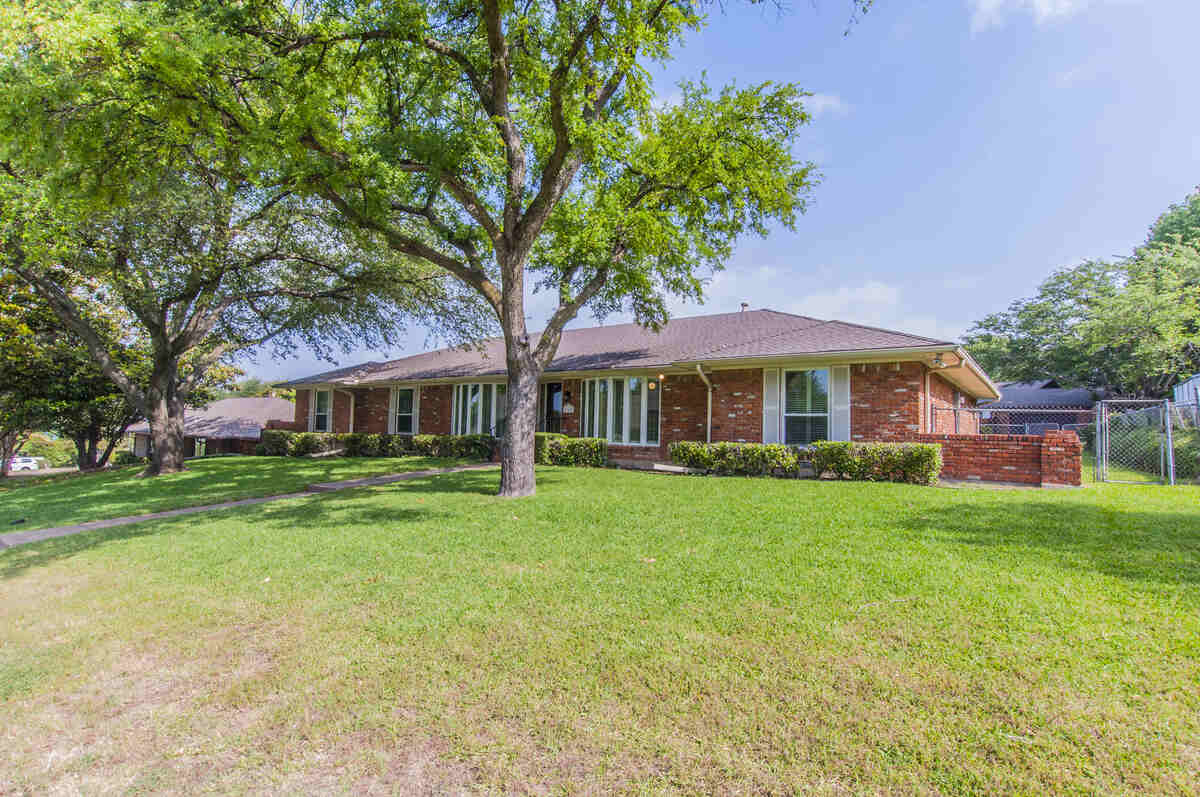
It’s July in Rockwall. Ugh. Say no more — the heat and humidity are oppressive, and you dread going outside, knowing you must mow the grass, weed the garden beds, and prune your shrubs. You decide there’s got to be a better way. Let’s investigate these 10 low-maintenance landscaping ideas for your Rockwall property.
1. Go Native, Rockwall Style
Incorporating native plants into your garden not only supports the local ecosystem but also offers a low-maintenance and sustainable option for landscaping. These plants have evolved to thrive in their region’s specific climate, soil, and light conditions. By opting for native plants, homeowners can contribute to a “green” lifestyle.
There are lots of advantages to Rockwall native plants:
- Don’t require pesticides or fertilizers
- Require less watering and maintenance
- Support the local ecosystem
- Supply food and shelter to native wildlife
- Provide natural beauty and character to your landscape
- More disease resistant
Here are a few of the best native plants for Rockwall, TX:
- Rock Rose (Pavonia lasiopetala): Also known as Cistus, rock rose is a hardy ground cover that thrives in rocky and disturbed soils. Its name comes from its ability to grow in these harsh conditions. During the warmer months, rock rose produces stunning pink flowers that resemble hibiscus blooms and attract butterflies.
- Autumn Sage (Salvia gregii): Autumn Sage is a beloved plant in the Southwest, often used for its beautiful flowers and aromatic foliage. It can be used as a small shrub in a garden bed or as a low hedge. Autumn sage is known to attract hummingbirds with its vibrant blooms showcasing colors of red, pink, orange, purple, white, and everything in between.
- Texas Frogfruit (Phyla nodiflora): This semi-evergreen plant is a great host for butterfly larvae and can spread quickly, making it an attractive option for a ground cover. It can thrive in various conditions, including drought and flooding, and can even be used to add a touch of greenery to hanging baskets or rocky areas.
- American beautyberry (Callicarpa americana): The American beautyberry is a stunning shrub that adds interest to your garden for three seasons. It can grow from 3 to 8 feet tall and boasts light green leaves in the spring and beautiful lavender-pink blooms in the summer. As fall approaches, the flowers transform into clusters of berry-like fruit that are visually appealing and edible.
2. Gotta Love Grass
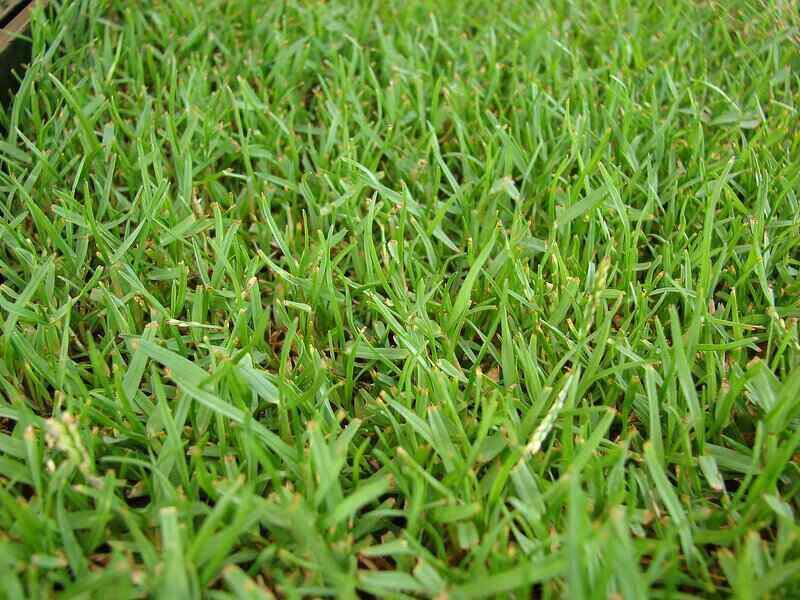
Photo Credit: Forest & Kim Starr / Wikimedia Commons / CC BY 3.0 US
If you’re looking for a low-maintenance lawn in Rockwall, consider using warm-season grasses. These grasses are specifically adapted to thrive in the hot and humid conditions of the area, making them a great choice for homeowners who want to reseed or resod their lawn.
Not only do they require less water, but they also need minimal fertilization, making them an easy and cost-effective option for those looking to maintain a beautiful lawn.
Here are the best low-maintenance grasses for the Rockwall area:
- Zoysiagrass (Zoysia sp.): This warm-season turfgrass is known for its drought tolerance and softness underfoot. While Zoysiagrass may take some time to establish, it produces a dense and lush lawn resistant to weeds once it grows. Due to its slow growth from seed, it is often installed using sod or plugs.
- Buffalograss (Bouteloua dactyloides): Looking for a low-maintenance alternative to traditional turfgrass? Consider buffalograss. This hardy grass, native to Texas, requires minimal fertilization and is naturally resistant to drought and disease. It was once a primary source of grazing for the buffalo herds that roamed North America.
3. Be Fake with Artificial Turf
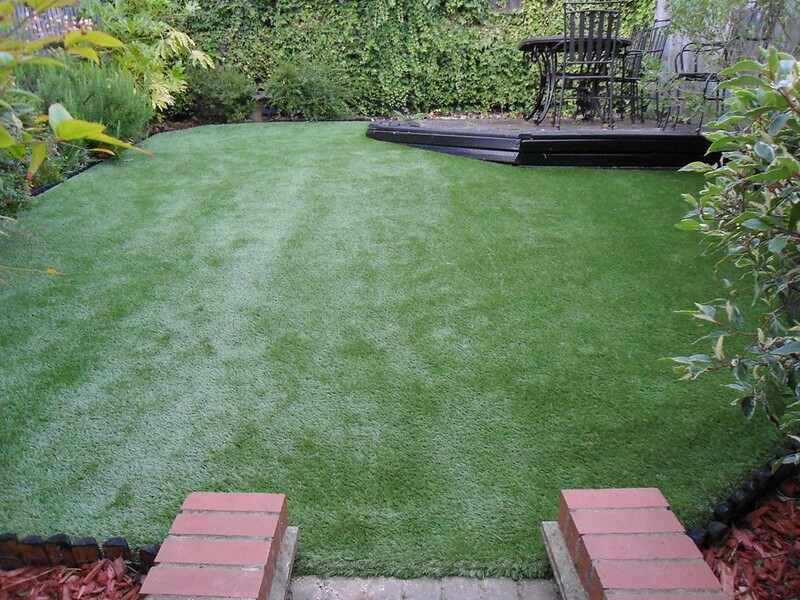
If the thought of lawn care and lawn maintenance makes your blood pressure soar like the heat and humidity of Rockwall’s summers, consider going fake. Artificial turf (fake grass) will give you a low-maintenance lawn with one exception — dog urine.
The good news is that fake grass doesn’t die or turn brown from your dog’s urine. However, you’ll have to hose down the area with water where the dog urinated. Otherwise, you’ll smell urine while hanging out in your backyard.
If your (real) lawn suffers from dog urine, you may want to know Why Dog Pee Kills Your Grass (and How to Fix Your Lawn).
4. Make Friends with Mulch
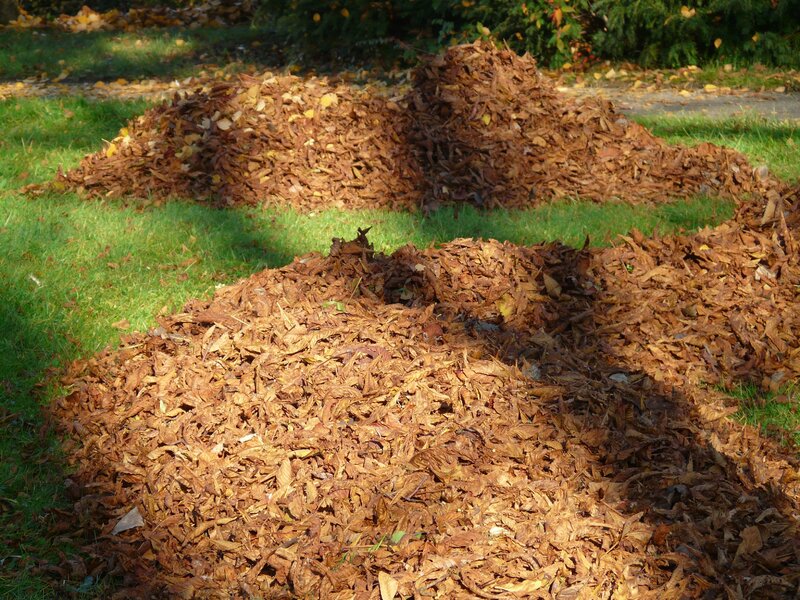
Mulch is a major component in any low-maintenance landscape. Here are a few reasons why:
Advantages of using mulch:
- Conserves soil conditions (temperature and moisture)
- Cuts down on weeds (they will still grow, but will be easier to pull)
- Adds nutrients to the soil
- Keeps soil from eroding
- Protects plant roots from extreme heat and drought
Choosing the right mulch for your flower beds and garden is important because organic materials like compost, tree bark, and wood chips will add nutrients to the soil as they decompose.
Don’t forget inorganic mulches like rocks, gravel, and rubber. Unlike organic mulches, you won’t have to worry about replacing them once they’re spread. They don’t provide any nutritional benefits to your plants, but they still offer all the advantages of a low-maintenance landscaping lifestyle.
5. Hardscaping
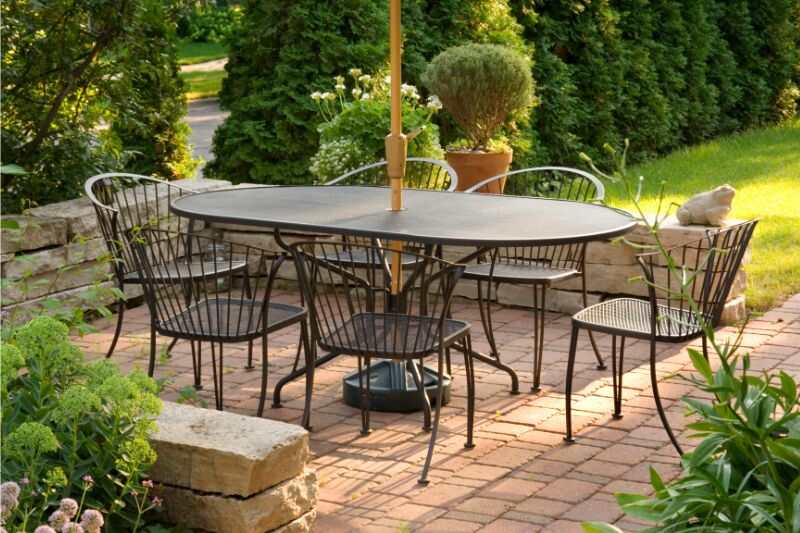
Hardscaping refers to any non-living materials in the landscape, such as concrete, brick, wood, metal, and stone. These materials are used for various purposes, such as defining an outdoor space or creating a path through a garden. Hardscaping elements can also complement and enhance the natural beauty of softscaping (living elements, such as plants and flowers).
Hardscaping has many benefits for the low-maintenance lifestyle:
- No mowing, edging, or fertilizing needed
- Saves money on your water bill (it doesn’t require water like plant material does)
- Property values might increase
- More useable outdoor space to congregate with friends and family
My 20+ years as a landscape designer gave me the expertise in design to transform unused outdoor spaces into beautiful, low-maintenance areas that can be enjoyed year-round. With vision and skill, hardscaping materials can be transformed to create outdoor areas that include:
6. Hardscape Edging
When planning your landscaping, consider hardscape edging. This technique uses bricks, stones, or metal to create a clear “edge” between different areas of your yard, garden beds, and grass. Not only does it add a polished look to your landscaping, but it also helps keep the mulch in garden beds contained and keeps Bermudagrass out of your flower beds.
Tip: It’s important to be aware of impervious surface regulations in your state, as they dictate the amount of non-porous surfaces like concrete or asphalt compared to grass. Too much impervious surface (non-porous surfaces) can lead to increased runoff and flooding because the water cannot be absorbed into the ground.
7. Wonderful Ways to Water
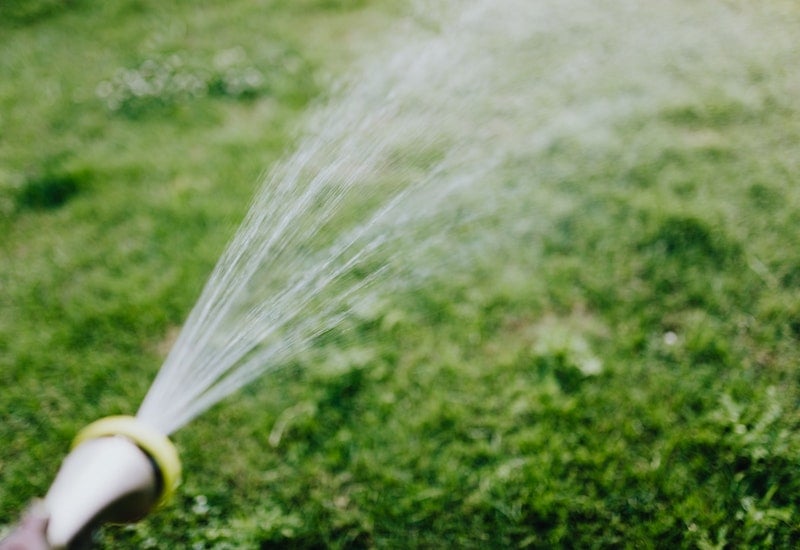
Picture yourself unwinding in your cushy armchair, feeling the cool breeze of your air conditioning, while your lawn and garden are being watered automatically, without you having to lift a single finger. Ah, the ultimate relaxation! Yes, there are wonderful ways to water with an irrigation system. Talk about a low-maintenance tip!
Irrigation systems deliver water to the soil through various tubes, pumps, and spray networks. For homeowners, irrigation systems offer a low-maintenance solution to watering their lawns and gardens, ensuring that plants receive the right amount of water at the right time.
Below are three types of irrigation systems and how they work:
| Types of Irrigation Systems | How They Work |
| Sprinkler | Water is supplied overhead using sprinkler heads to specific zones. |
| Trickle/Drip | Surface watering system delivers water to the plant’s roots. (Used most often for ornamental beds.) |
| Subsurface | Delivers the water underground through emitters and tubes. |
Tips to remember:
- Create different zones for watering – By separating grassy areas from garden beds, you can ensure that each area receives the appropriate amount of water. Since grass requires more water than other plants, this strategy can help you save water and keep your plants healthy.
- Don’t waste your water – Ensure the water is directed towards your lawn, not on hard surfaces like your sidewalk, driveway, or road.
- Set your system up to run during optimal watering times – Best time is between 2-8 a.m.
Benefits of using an irrigation system
- Proper placement of sprinkler heads will help conserve water
- Consistent timing for water delivery will be ensured
- Uniform water flow will be delivered to all areas
- Enable the proper amount of water to be delivered to areas with large trees and shrubs
If you are considering using an irrigation system in your yard, planning is key. It’s important to consider your budget, how your outdoor space is used, and how much maintenance you’re willing to commit to.
Seek advice from irrigation system experts to generate ideas and ensure proper sprinkler system installation and maintenance. If there are any issues, they can also provide sprinkler repair services.
8. Xeriscaping
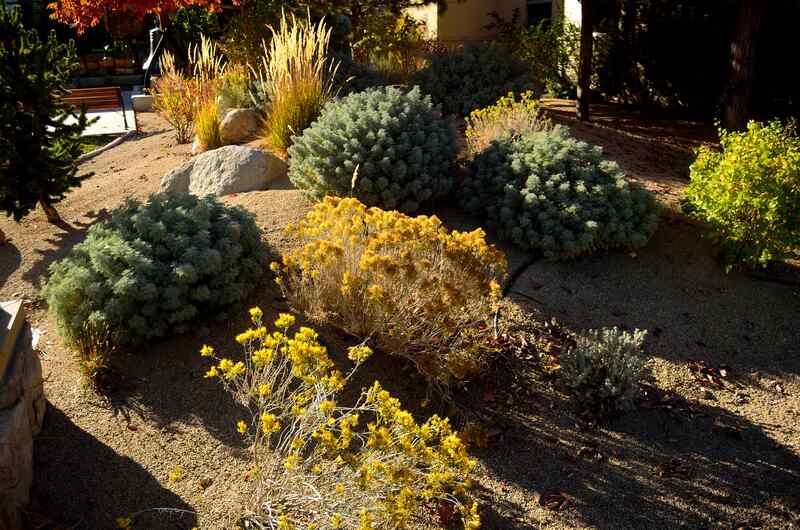
As the population of Rockwall continues to grow, so does the water demand. A significant portion of water usage goes to watering lawns and gardens.
To combat this problem, xeriscaping has emerged as a solution. This landscaping approach involves using various sizes of stones, succulents (plants that require very little water), and other drought-resistant plants.
Common plants in Rockwall xeriscapes include:
- Red yucca
- Gulf muhly
- Desert willows
9. Let it Rain (Rain Gardens)
Rain gardens offer a low-maintenance and eco-friendly option for landscaping:
- They reduce manual watering because they are designed to collect and absorb stormwater runoff.
- Once established, rain gardens thrive on their own and require minimal upkeep.
- Rain gardens are a sustainable solution for managing stormwater runoff. These gardens are designed to capture and filter rainwater, allowing it to slowly seep into the ground instead of flowing into nearby bodies of water. By doing so, rain gardens help reduce the amount of pollutants that enter our waterways, promoting a healthier environment for all.
10. Rock It (Rock Gardens)
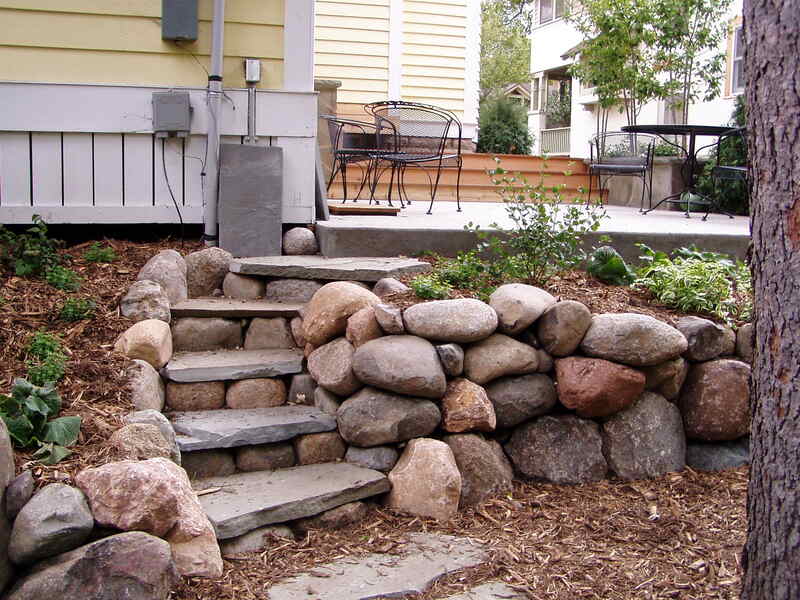
A rock garden showcases rocks, stones, and boulders in areas with poor soil quality or limited space. Rock gardens are great for those Rockwall homeowners struggling with gardening issues like the intense summer heat, turfgrass not thriving, and plant commitment issues. If you want to add plants, cacti and succulents are popular low-maintenance choices.
FAQ
Soil analysis can determine soil pH, nutrient content, and texture. This information can help you choose fertilizers and soil amendments to promote healthy plant growth and prevent diseases.
When testing your soil, you have two primary options:
1. A DIY soil test kit is a great option for those looking to test their soil without breaking the bank. These kits are designed to be user-friendly and can be used in the comfort of your own home. However, it’s important to note that these kits may only provide limited information, such as pH levels and nutrient deficiencies.
2. Lab: If you want a more detailed analysis of your soil’s composition and potential issues, you can send a sample to a professional testing lab. Although this option may cost more, it can give you a more comprehensive understanding of your soil.
If you want to obtain a full soil analysis, choose option two. Send a sample of your soil to a soil testing lab. Contact the Texas A&M AgriLife Extension Service in Rockwall County to learn more about affordable soil testing options.
Consider incorporating succulents, ornamental grasses, and gravel. Succulents require minimal upkeep compared to other plants and offer a beautiful touch of green. Their unique shapes and textures add a sculptural element to your landscaping that traditional grass lawns can’t match.
Pea gravel are small, smooth stones that resemble peas (vegetables) in size and come in natural colors, including brown, gray, and white. These stones are typically found near bodies of water, such as riverbeds, and are created through flowing water smoothing out their texture.
Pea gravel is used for patios, garden pathways, dog runs, and drainage ditches as a low-maintenance, cost-effective, versatile garden option. Its small size makes it easy to lay.
Making sure you properly prepare the area before laying pea gravel with landscape fabric is important; a layer of sand or crushed rock (or both) can help ensure a stable and long-lasting installation. One disadvantage of pea gravel is that it can dislodge over time.
When to Call in the Landscape Pros
If you’re looking to transform your Rockwall yard into a low-maintenance oasis, it’s worth considering the expertise of a local landscape designer. These professionals can create a high-quality landscape design plan to optimize your outdoor living space and recommend the best plants for your property.
Low-maintenance landscaping will lower your stress level and blood pressure. Need help with establishing a low-maintenance lawn? Hire a local Rockwall landscaping company to do the work for you. They can provide a free quote for landscape services like yard cleanups, lawn mowing, weeding, edging, and pruning so that you can relax and enjoy.
Main Image Credit: Brent Eckley / Flickr / CC BY 2.0